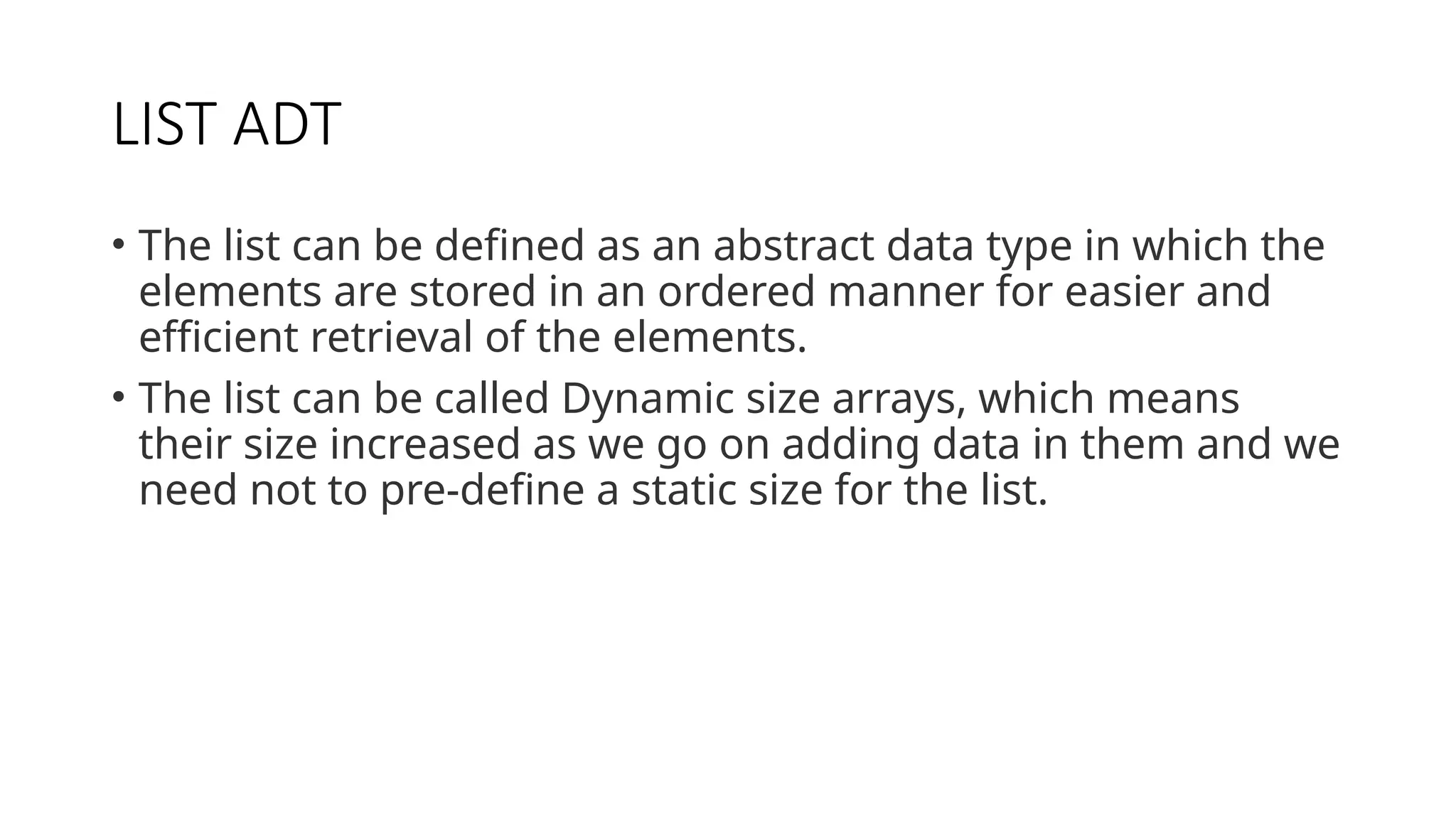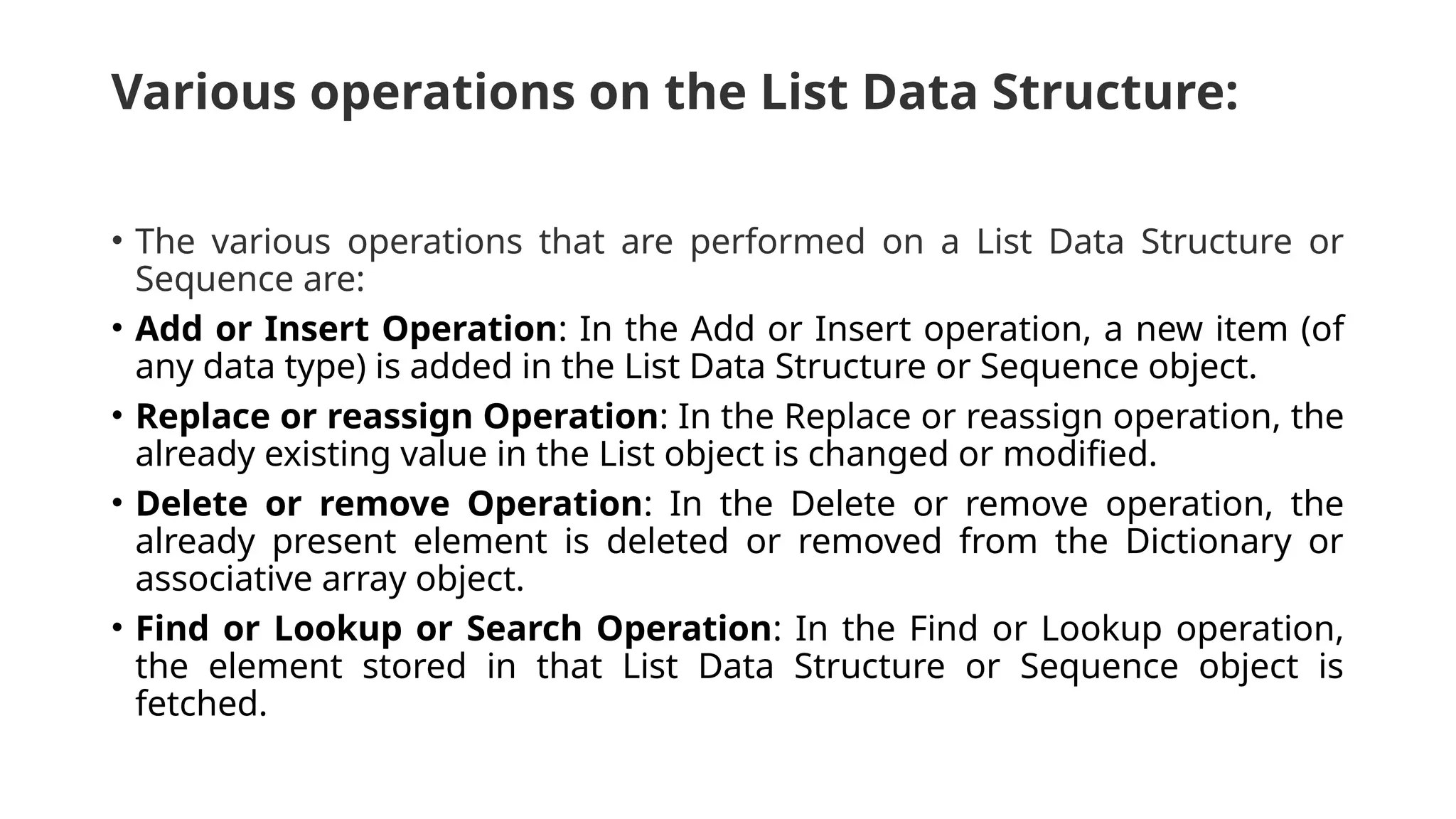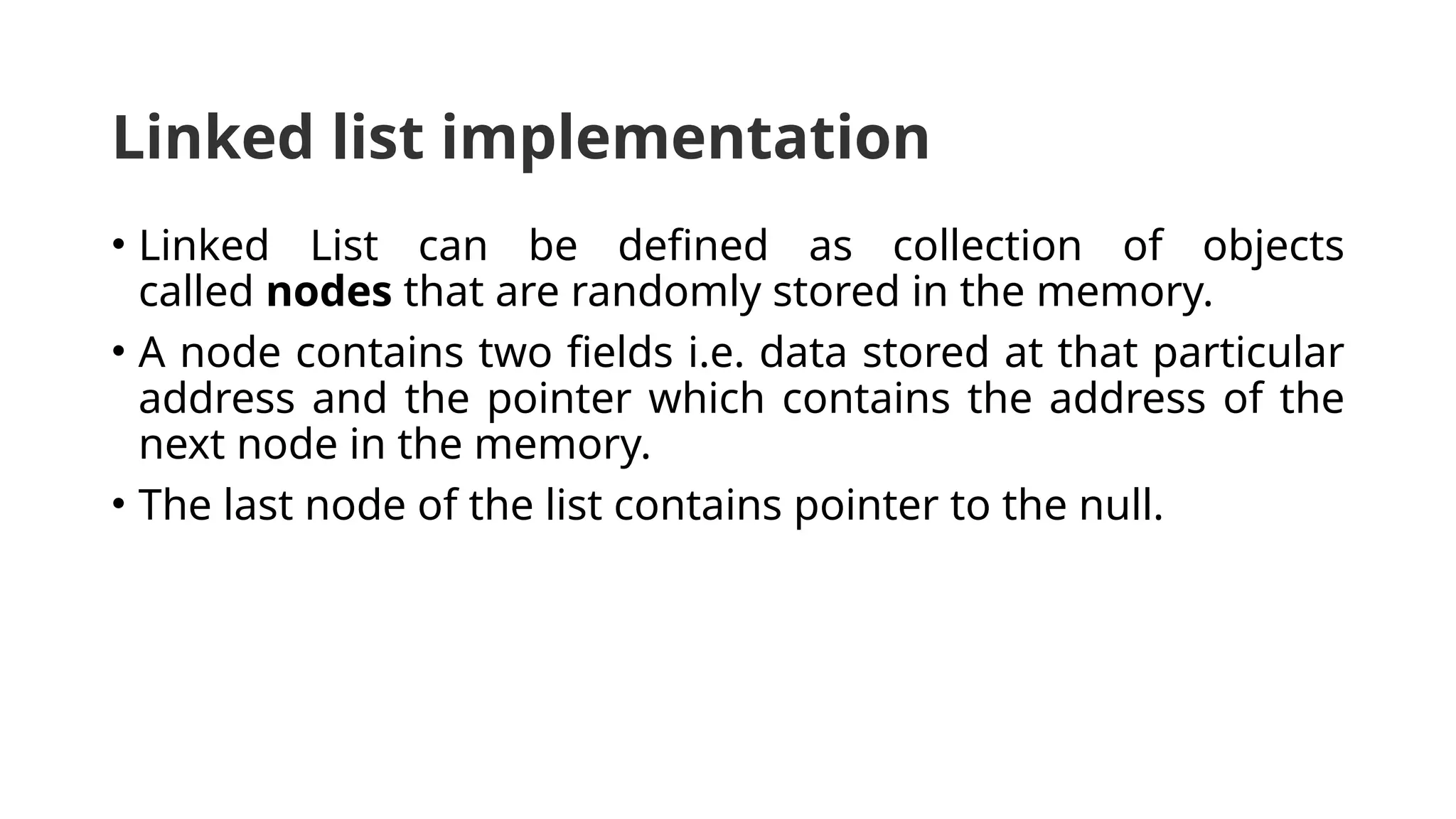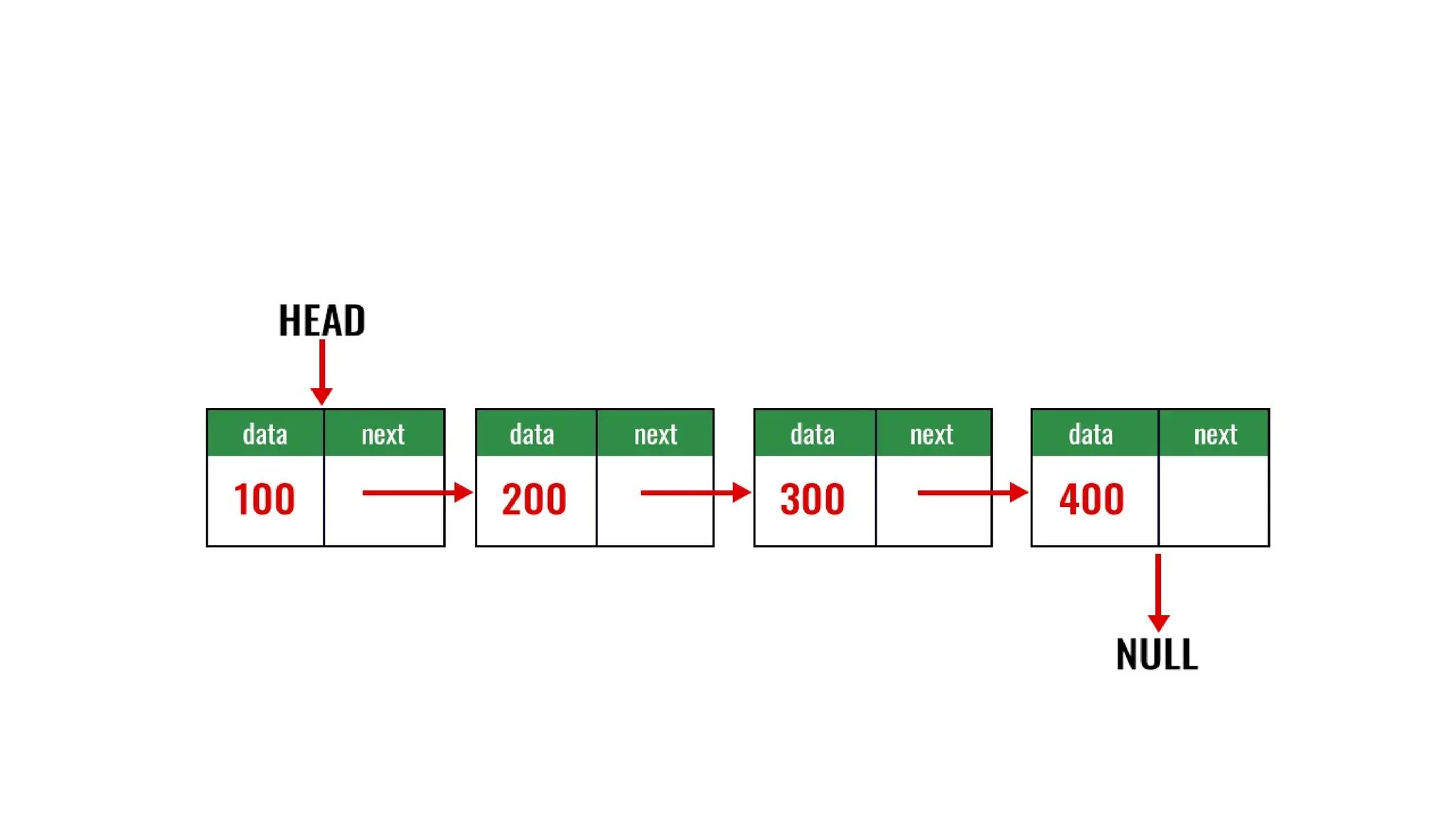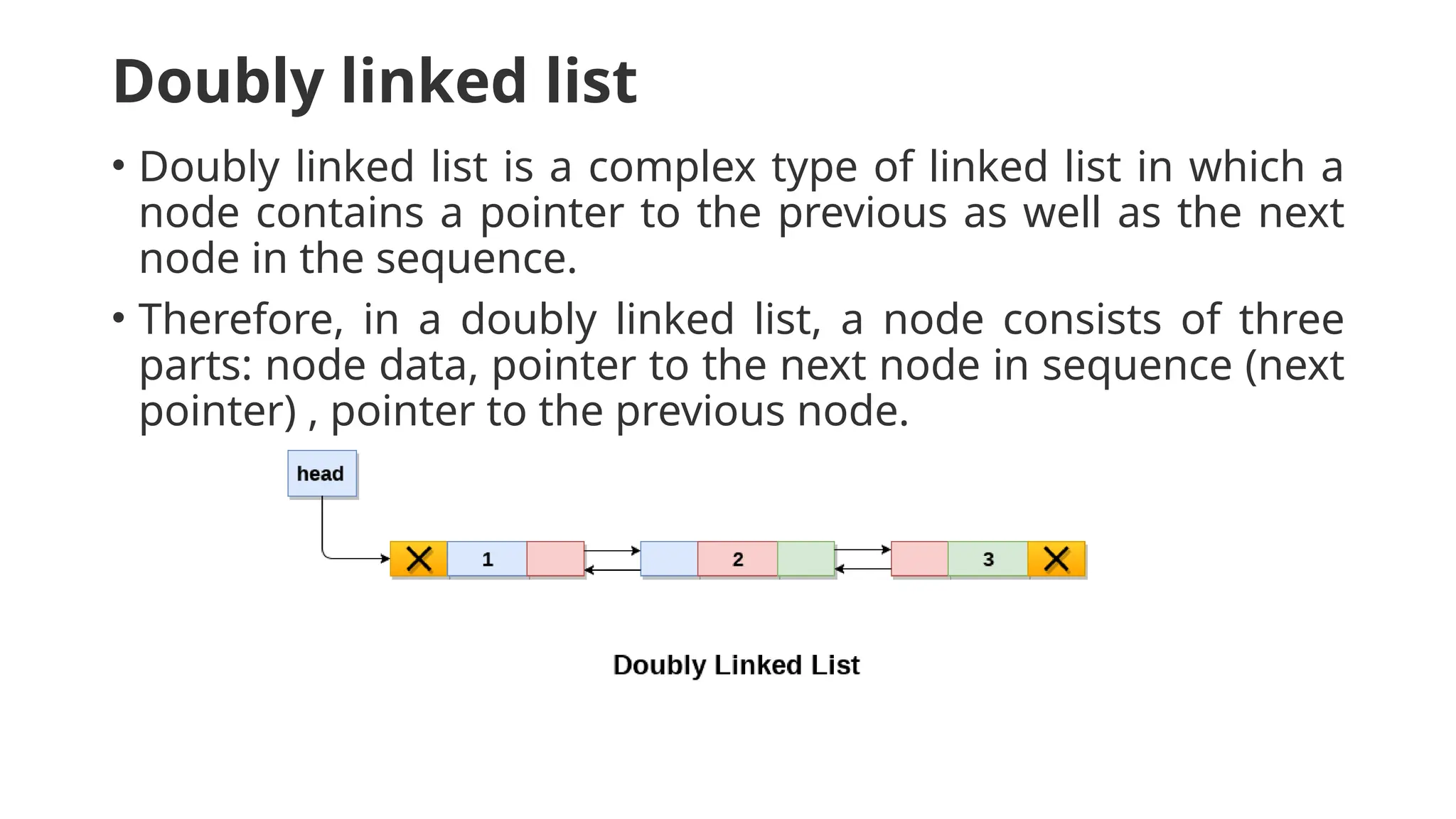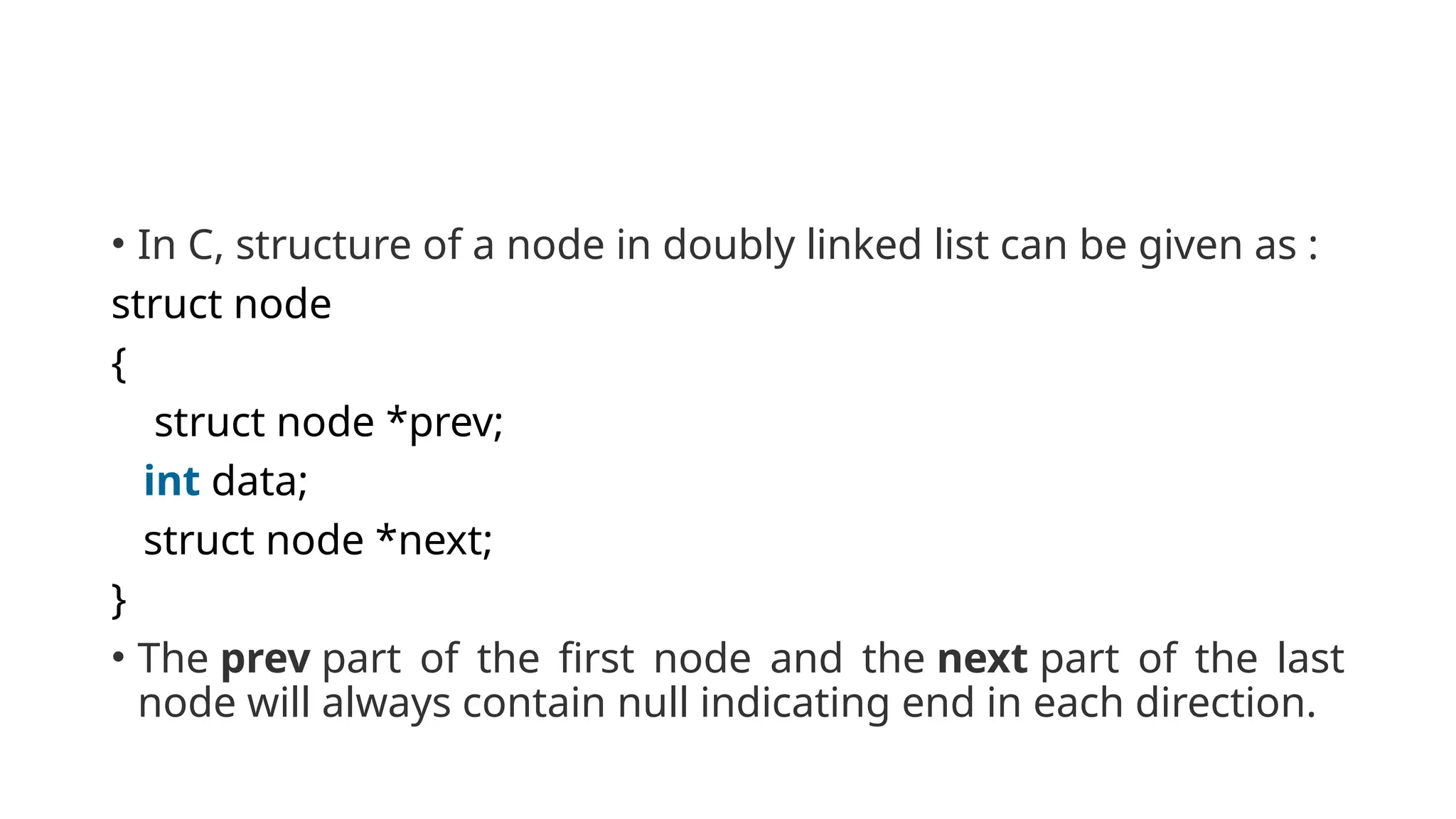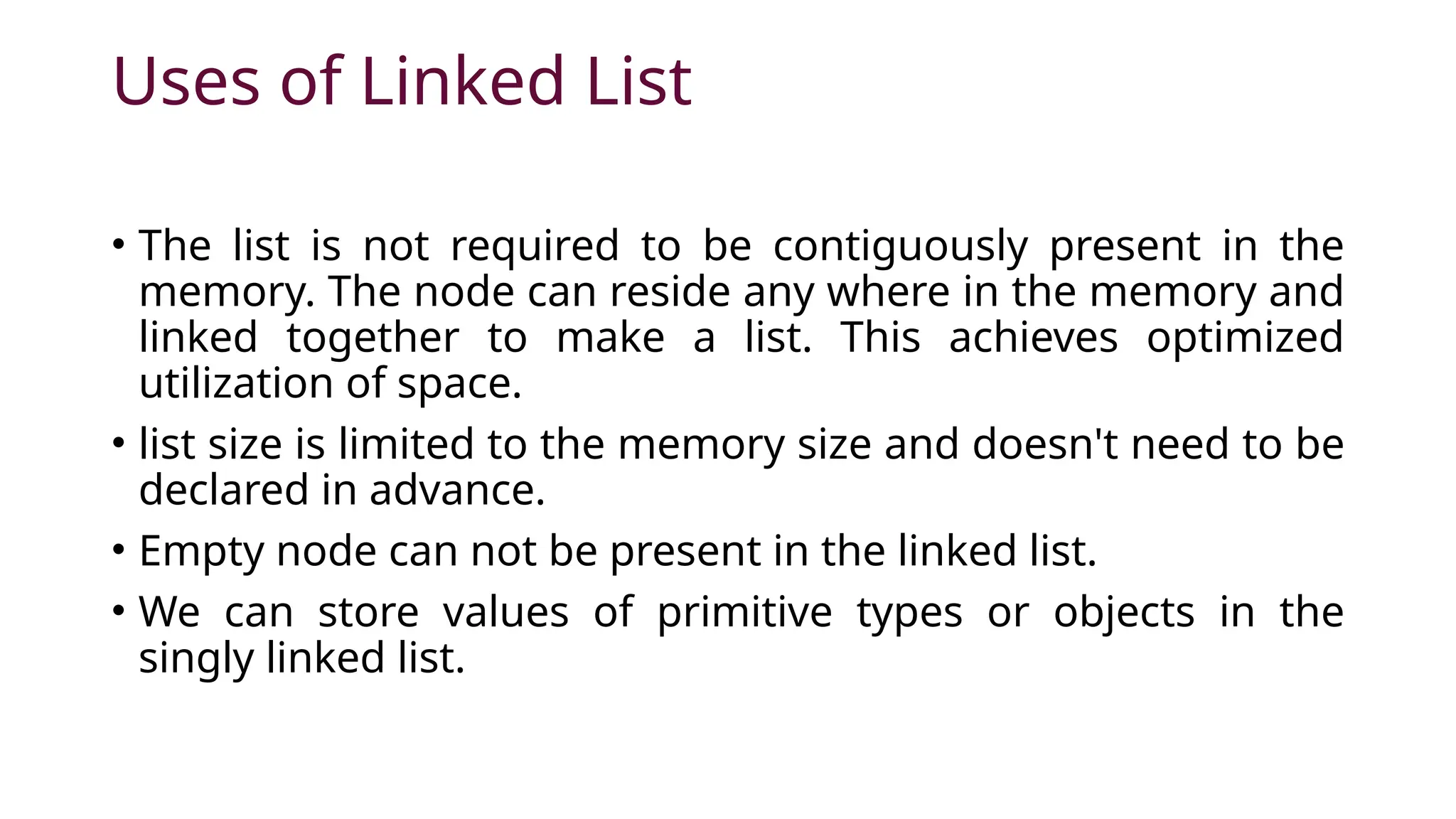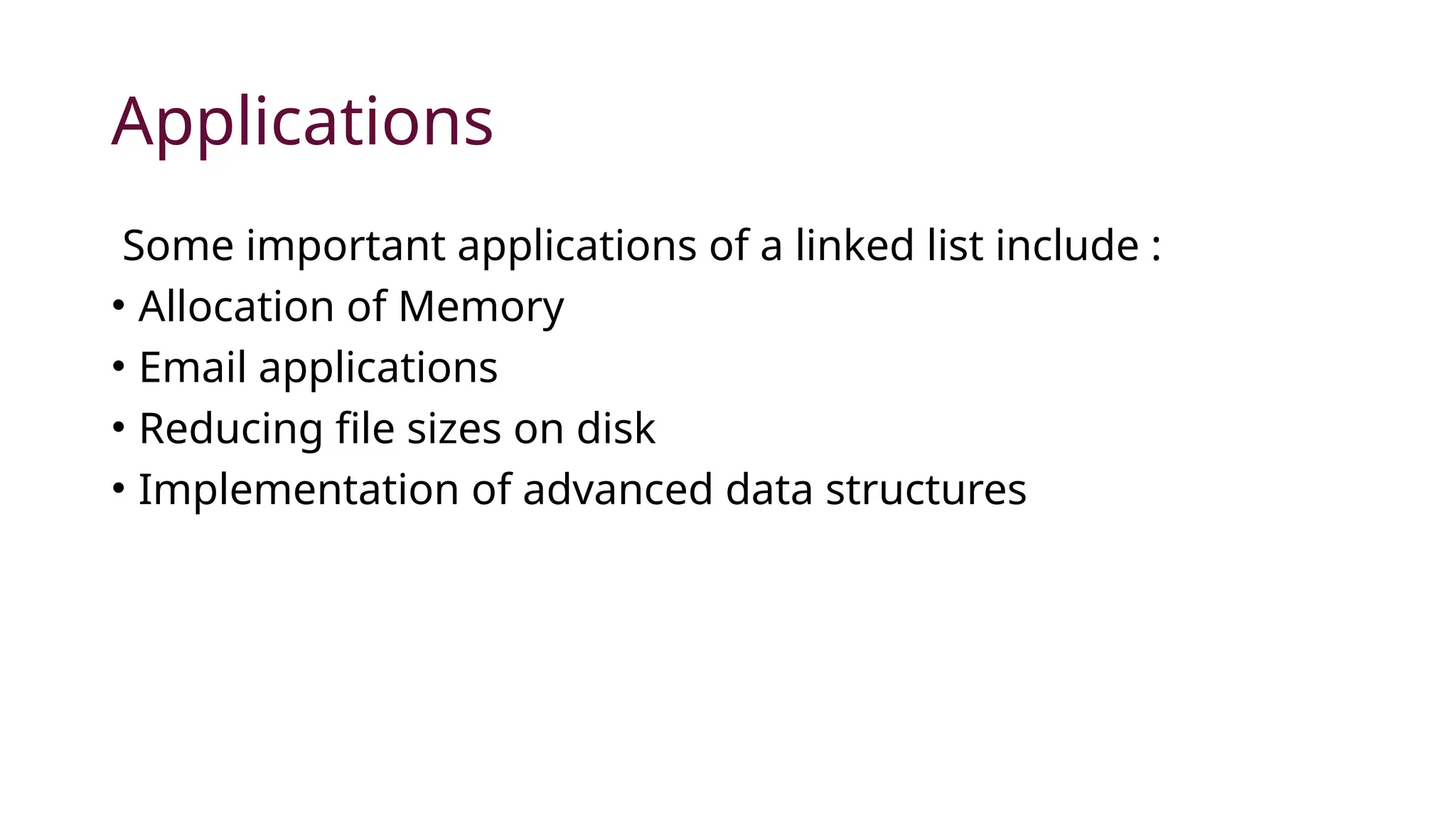The document discusses the concept of lists as an abstract data type where elements are stored in an ordered manner, detailing various operations such as adding, replacing, deleting, and finding elements. It also explains linked lists, which consist of nodes with pointers to the next and previous nodes, emphasizing their memory efficiency and dynamic sizing. Additionally, it highlights applications of linked lists in memory allocation, email applications, and advanced data structures.
